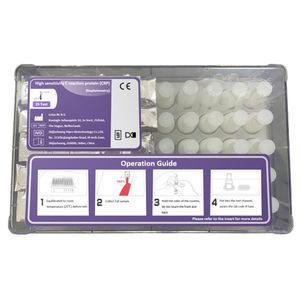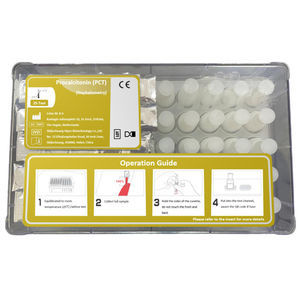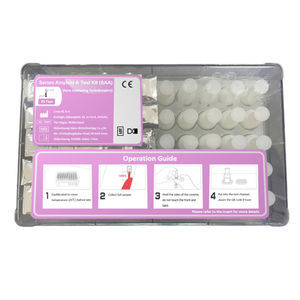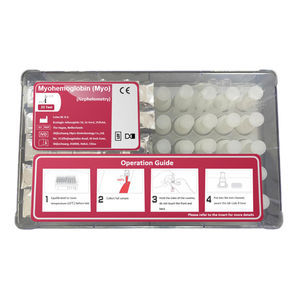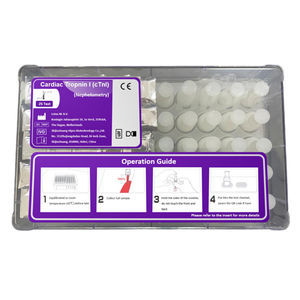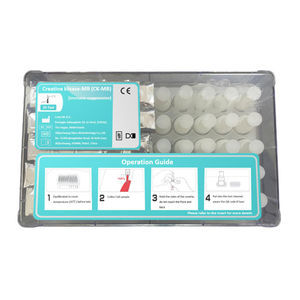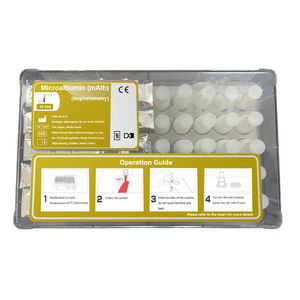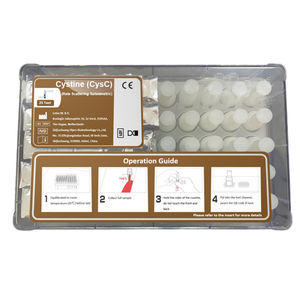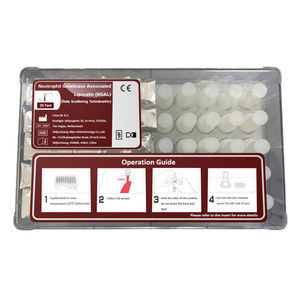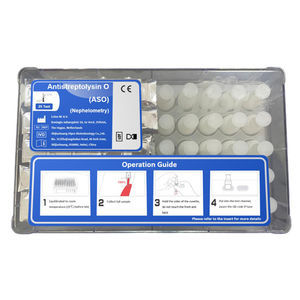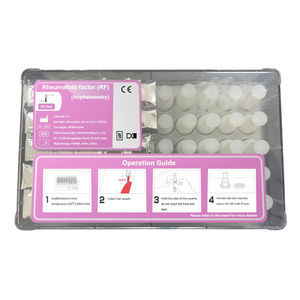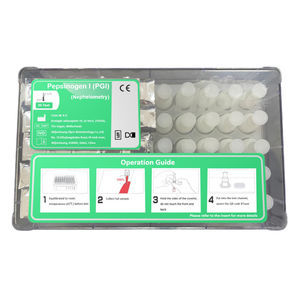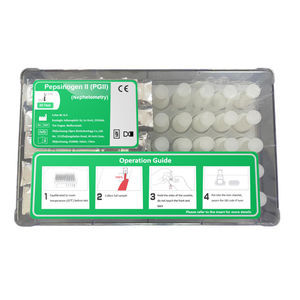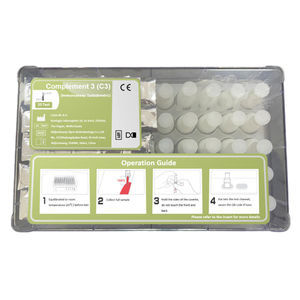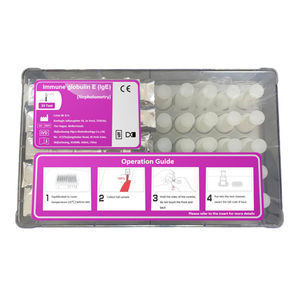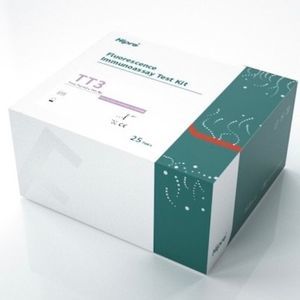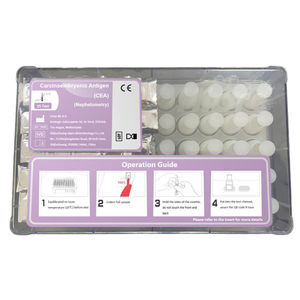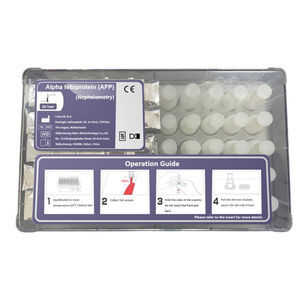
- Laboratory
- Laboratory medicine
- Liver disease test kit
- Hipro Biotechnology Co., Ltd.
Prealbumin test kit for liver diseasealbuminblood
Add to favorites
Compare this product
fo_shop_gate_exact_title
Characteristics
- Applications
- for liver disease
- Tested parameter
- albumin, prealbumin
- Sample type
- blood, serum, surface
- Result display time
300 s
Description
The prealbumin blood test kit is used to determine the content of Prealbumin (PA) in human serum, clinically used to reflect the degree of liver injury and nutritional assessment.
Prealbumin Test Purpose
Normally, the prealbumin blood test will be conducted for following purposes:
Help diagnose certain liver or chronic dieases
Assess the nutritional status. Normally lower albumin and prealbumin levels suggest possibel protein-energy malnutrition. Thus, the prealbumin blood test is also widely used for monitoring the effects of nutritional therapy.
Prealbumin Blood Test Testing Principle
The prealbumin antibody is coated on the latex surface. The prealbumin in the sample and the antibody become immune complexes by latex agglutination reaction. The immune complexes will produce the phenomenon of light scattering which is proportional to the intensity of scattered light and samples of PA levels. Using a specific protein analyzer to measure the intensity of scattered light, the concentration of PA is determined by comparing the turbidity of samples to the standard concentration.
Prealbumin Levels Normal Range
According to the research conducted by the University of Rochester Medical Center, the normal prealbumin levels are:
"Adults: 15 to 36 milligrams per deciliter (mg/dL) or 150 to 360 milligrams per liter (mg/L)
Children: 20 to 40 mg/dL or 200 to 400 mg/L"
Catalogs
No catalogs are available for this product.
See all of Hipro Biotechnology Co., Ltd.‘s catalogsOther Hipro Biotechnology Co., Ltd. products
Diagnostic Reagents
Related Searches
- Assay kit
- Solution reagent kit
- Blood assay kit
- Serum assay kit
- Immunoassay assay kit
- Plasma assay kit
- Infectious disease detection kit
- Blood rapid diagnostic test
- Diagnostic reagent kit
- Protein reagent kit
- Molecular test kit
- Virus rapid diagnostic test
- Serum rapid diagnostic test
- Respiratory infection test kit
- Whole blood detection kit
- Plasma rapid diagnostic test
- Infectious disease rapid diagnostic test
- Clinical assay kit
- Whole blood rapid diagnostic test
- Cassette assay kit
*Prices are pre-tax. They exclude delivery charges and customs duties and do not include additional charges for installation or activation options. Prices are indicative only and may vary by country, with changes to the cost of raw materials and exchange rates.


